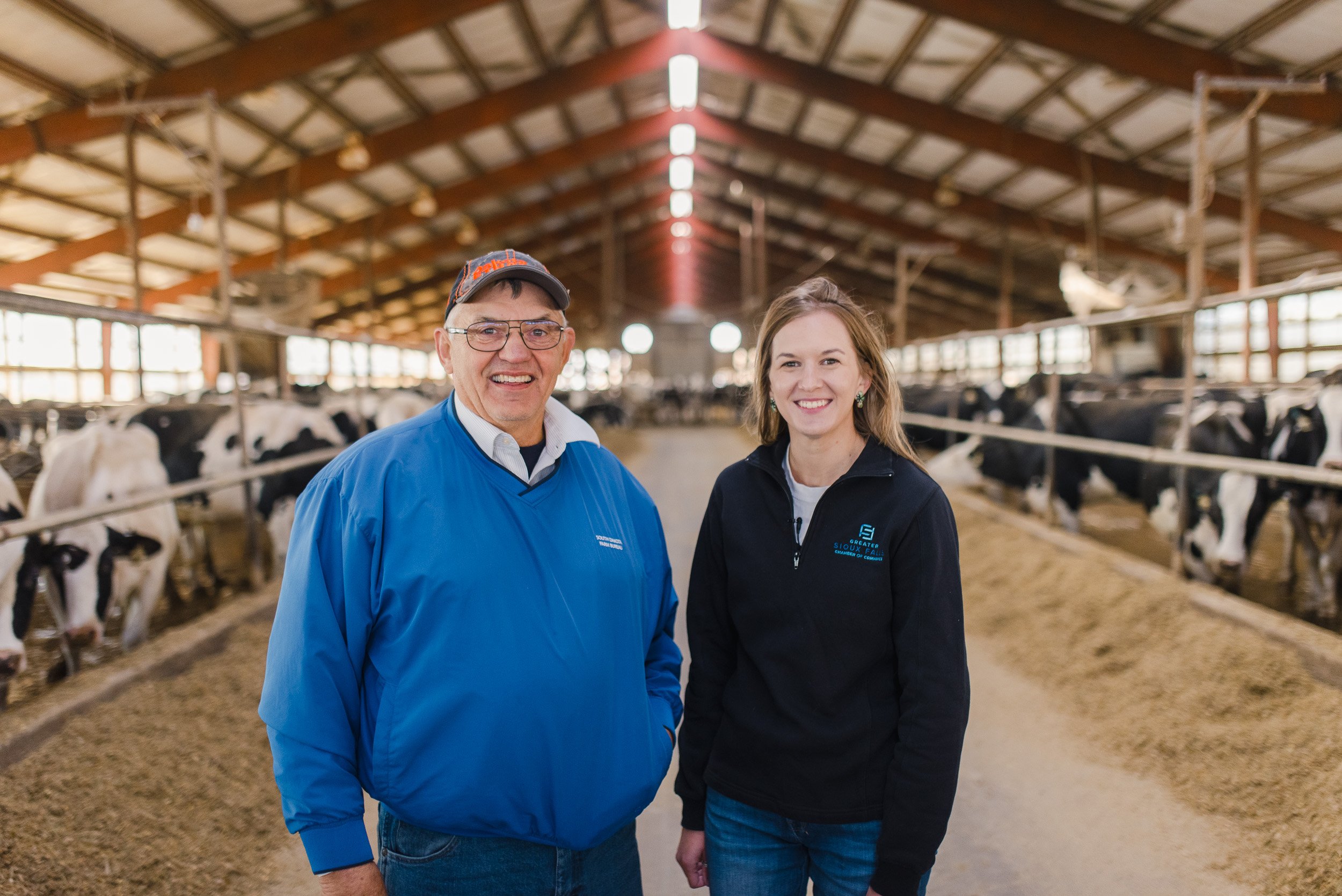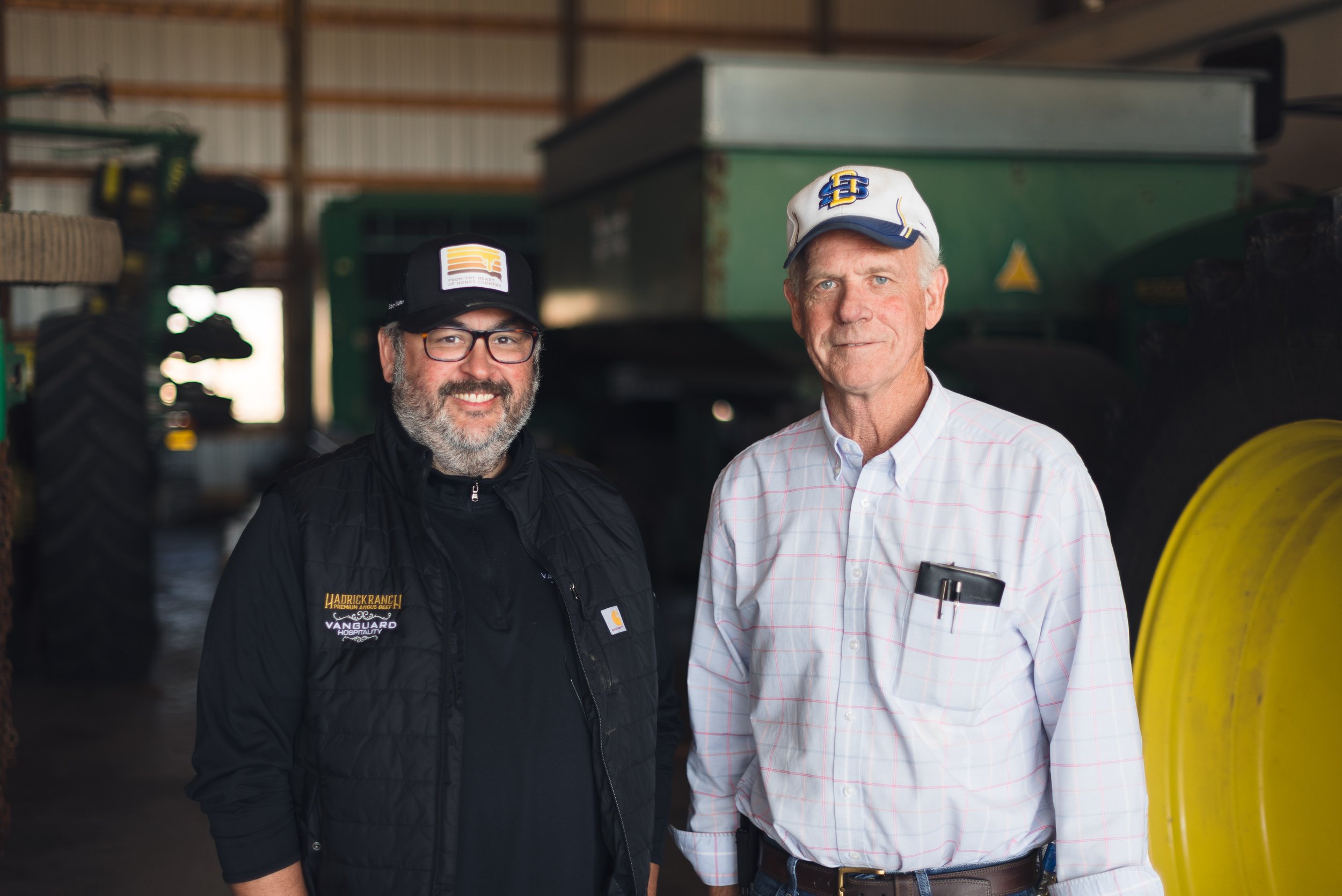
Exploration of Soy Products in Production
Soy-based products are a more sustainable and increasingly common solution for improving upon regularly utilized products. With soy being implemented into over 1,000 known uses today, some of the more recent advancements include soy-based asphalt sealant…
South Dakota Farmers
There are more than 29,900 farms and ranches across South Dakota, where nearly 50,000 farmers and ranchers grow nutritious crops and raise healthy livestock. Explore what life is like for a South Dakota farmer.
-
Family farms account for 98% of farms and 87% of the ag production in the United States. Many of them in South Dakota are operated by multiple generations of the same family. In fact, more than 2,800 farms and ranches in our state have been in the same family for over 100 years. As you can imagine, these legacies provide a major motivation for farmers to take good care of their land so it can be passed to future generations.
To find out more about what a family farm looks like today, we asked a few South Dakota farmers about the important role family plays in their lives on the farm.
“I would say that my favorite thing about farming is being able to do it together as a family. I enjoy being able to see my husband at work, and I enjoy being able to bring our daughter to that environment and raise her just like my husband was raised.” – Morgan, a farmer from Colman.
“I live on the farm my great-great-grandfather homesteaded in 1874 after coming over from Sweden. In fact, I live in the very house that my great-grandfather built in 1911. That part of our history is very important to me. The farm is a wonderful place to raise children. There’s something special about coming home, sitting on my porch, and looking out at our crops. When I look out at the land that’s been in my family for generations, it means a lot to me. We farm because it’s in our blood, and it’s part of our family.” – Charlotte, a farmer from Alcester
-
There are many different methods farmers can use in the field, but they all achieve the same goal: growing safe and nutritious crops.
Organic and Conventional Farming
In conventional farming, farmers can choose whichever USDA-approved products and practices work best for their farm. To be certified organic, farmers must pass yearly certifications and comply with standards that prohibit certain practices, such as the use of GMO crops or synthetic fertilizers or pesticides. Foods grown using organic and conventional practices are equally safe and nutritious. There are probably more similarities between them than you realize!
GMO and Non-GMO Crops
GMO crops are plants that have naturally existing genes added to achieve certain characteristics, like resistance to insects or the ability to grow with less water. Farmers use them to achieve better yields and use fewer resources. GMO crops have been planted for over 20 years, and people and animals have consumed food from GMO crops all that time. Years of research and testing have proven they cause no negative effects on animal or human health, and there is no nutritional difference between ingredients from GMO crops and non-GMO crops.
Keeping Crops Healthy
Farmers use crop inputs like herbicides, insecticides, fungicides, and fertilizers to keep their crops healthy. Herbicides protect crops from weeds, insecticides protect crops from insects, and fungicides protect crops from diseases. Fertilizers consist of mostly naturally occurring nutrients to keep crops and soils healthy. Any product approved for use must demonstrate no undue risk to humans, wildlife, fish, waterways, or plants, including non-target insects and endangered species.
-
South Dakota livestock farmers take pride in raising healthy animals to bring nutritious meat, milk, and eggs to your family’s table. Here are some of the ways livestock farmers are raising healthy animals:
Shelter: Most of the pigs, cows, and poultry raised in South Dakota and the U.S. are raised indoors, enjoying comfortable, well-ventilated, climate-controlled barns where they are kept clean and safe from predators, flies, and the elements.
Nutrition: Most livestock receives a diet prescribed by a professional animal nutritionist. Soybean meal is an important part of that diet, providing animals with their main source of protein.
Health: Sometimes animals get sick and need antibiotics, just like people. Farmers work closely with their veterinarians to determine the best possible care for their animals. If an animal gets sick and requires antibiotics, the meat, milk, or eggs from that animal cannot enter the food supply until after a withdrawal period, which ensures the medicine has fully passed through its system. Some farmers use growth hormones to help sheep and cattle convert their feed and produce leaner, healthier cuts of meat, but hormone use is highly regulated and is not allowed in dairy cattle, poultry, or pork. The FDA establishes safe limits for hormones in meat to ensure all products are safe for people to enjoy.
-
Spring: Spring is the beginning of the growing season for farmers. In March and April, farmers prepare their fields for planting by tilling their soil, which reduces weeds, dries the fields, and distributes nutrients. Or, they may choose to forgo tillage, which helps reduce erosion and capitalizes on the organic matter left over from the season before. Some farmers also prepare for planting by applying fertilizer, which adds important nutrients to the soil. By late April and through May, farmers plant their seeds. Planting is heavily dependent on weather, so farmers watch the forecast carefully and stay ready to roll whenever conditions are right.
Summer: Throughout the summer months, farmers scout their fields for insects, weeds, and diseases that could harm their plants. If they detect an issue, they apply crop protection products, or pesticides, as needed. Since today’s farmers are grounded in science and data, they know their fields better than ever. They use precision technology to monitor each acre and deliver the right product where it’s needed in precisely the right amount. Farmers also tend to their equipment and facilities and market their crops throughout the summer.
Fall: Fall means one thing: harvest. By this time, farmers have clocked countless hours planning, preparing, and nurturing their plants, and harvest is when they get to see it all pay off. As trees change color across South Dakota, soybean fields transform as well, turning from green to a light golden brown. Farmers must balance timing, weather, and moisture levels when choosing the most optimal time to harvest, so they watch their crops closely from September through November. Once harvest is complete, if there’s still time, some farmers will till their fields and add any necessary fertilizer to leave them in good condition before snowfall.
Winter: Farming is much more than fieldwork. Maintaining a sustainable business also requires a lot of planning and bookwork. Farmers spend the cold winter months making equipment repairs, marketing their crops, tending to their finances, and planning for the next year. Since farming practices and products are constantly evolving, farmers also spend time researching and attending educational seminars to improve their operations. Meanwhile, livestock farmers stay busy taking special care of their animals to make sure they stay warm and cozy in the colder temps.
Meet the Farmers
We are South Dakota soybean farmers, and we’re proud to raise the crops that feed your families and ours. Whether you have questions about how your food is grown or you’re searching for helpful tips and tasty recipes, we’re glad you’re here.











Meet Brady Struck, a next generation farmer bringing new life to Struck Farm in Wolsey, SD! From reintroducing cattle to the operation to blending family heritage with innovation, Brady’s vision is clear: honor the past, embrace the future.